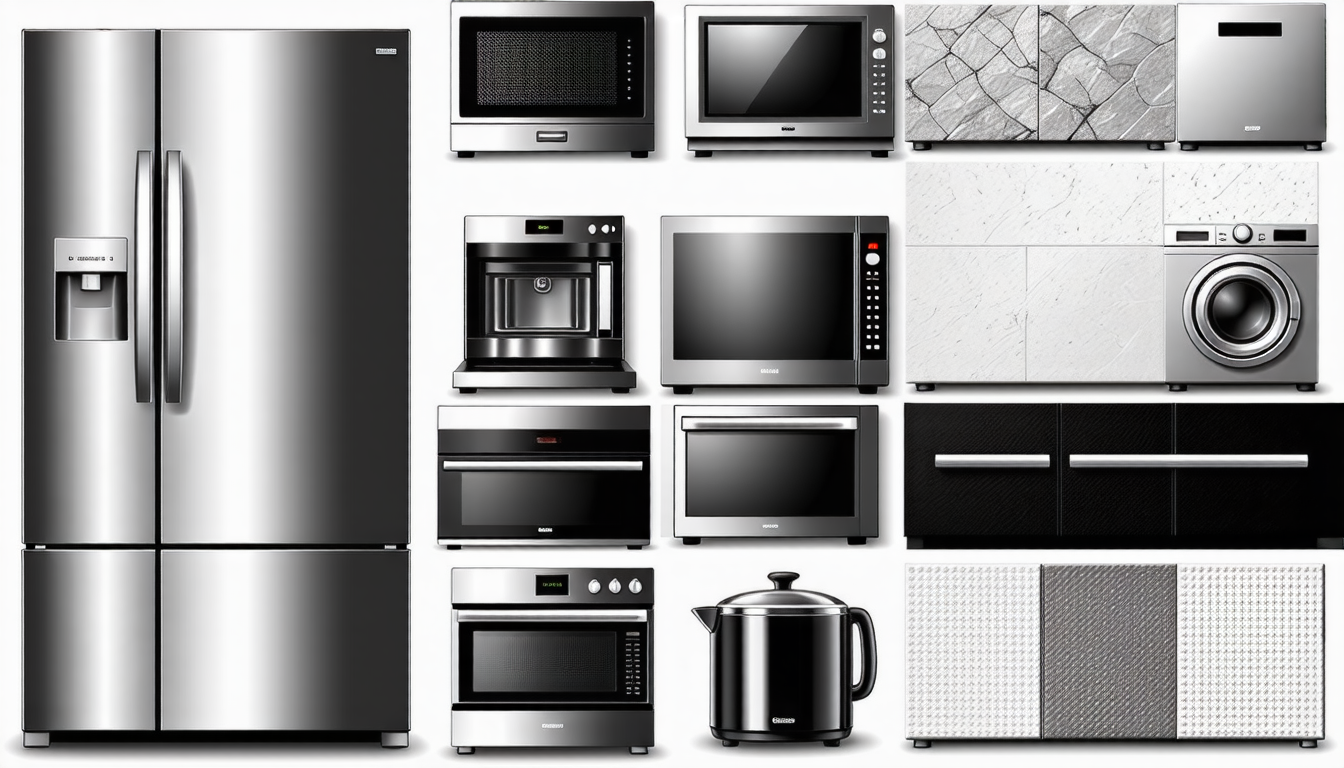|
IN BRIEF
|
In today’s fast-paced digital landscape, the magic of technology hinges on the fusion of diverse materials that seamlessly interact within electronic appliances. Beyond the sleek screens and blinking lights lies a treasure trove of metals, plastics, and ceramics all meticulously engineered for performance. Consider the vital role of copper for efficient wiring or the surprising contribution of silver in ensuring optimal conductivity. Each material brings its unique properties to the table, from durability and heat resistance to conductivity and aesthetics. As we delve deeper into the intricate world of electronics, we uncover not just how these components work, but the intricate dance of raw materials that makes our favorite devices not only possible but remarkably efficient.

In today’s technologically driven world, electronic appliances have become integral parts of our daily lives. The functioning, reliability, and longevity of these devices heavily rely on the diverse materials used in their manufacturing. Understanding the composition of these products not only sheds light on their performance but also emphasizes the importance of innovation in materials science within the electronic industry.
Material Innovation and Performance
This emphasis on innovation is set to enhance not only the performance of electronic devices but also their environmental compatibility. Research is ongoing into materials that can perform under harsh conditions while remaining recyclable or biodegradable, creating a new standard for electronic manufacturing.
For more insights into the materials that comprise electronic appliances, explore cutting-edge resources available at Ragworm.
Copper
Copper, known for its excellent electrical conductivity, is the most prevalent metal used in wiring and circuit boards. It allows efficient energy transfer, which is crucial for the performance of any electronic device. Moreover, copper’s ductility enables it to be easily formed into various shapes, thus facilitating its use in the intricate designs of modern electronics.

The electronics industry relies heavily on a diverse array of materials. Among these, metals such as copper, silver, and gold play pivotal roles due to their excellent conductivity. For instance, copper is the primary choice for electrical wiring, known for its ductility and corrosion resistance. In fact, more than 60% of copper produced worldwide is utilized in the electrical sector, highlighting its significance.
Furthermore, polymers such as thermoplastics and thermosets are crucial for creating durable casings for electronic devices. Their lightweight and versatile nature makes them perfect for consumer electronics. This segment alone constitutes a billion-dollar market, expanding at a rate of approximately 5% annually, as manufacturers seek to innovate and improve product durability.
Moreover, the use of silicon in microchips and semiconductors cannot be overlooked. Silicon forms the backbone of modern electronics, with over 1 trillion units produced yearly for various applications. The synergy of these materials not only enhances performance but also boosts the overall efficiency of electronic appliances.

Electronics play an indispensable role in modern life, and the materials that comprise them are crucial to their functionality. Among the most vital components are a variety of metals such as copper, known for its exceptional conductivity, and silver, which ensures high-performance connections. Equally important are polymers and ceramics, utilized for their protective properties and thermal management abilities. Silicon continues to be the backbone of semiconductors, while innovations in materials such as epoxy resins and thermal greases enhance the durability and efficiency of devices. The synergy of these materials ensures that electronic products deliver reliability and performance, meeting the demands of today’s technology-driven world.
FAQ
What are the primary materials used in electronic appliances?
R: The primary materials include metals like copper and silver, various types of plastics, glass, epoxy, and ceramics. These materials are essential for manufacturing components and devices.
Why is copper important in electronics?
R: Copper is renowned for its high conductivity, ductility, and corrosion resistance, making it a crucial component for electrical wiring and connections in electronic devices.
What materials are best for thermal management in electronics?
R: The best materials for thermal management include thermal grease, pads, and tape, which help dissipate heat effectively and maintain optimal operating temperatures.
What role do polymers play in consumer electronics?
R: Polymers such as thermosets and thermoplastics are utilized for their lightweight properties and durability, making them ideal for casings and housings of various electronic devices.
What are semiconductors and their significance in electronics?
R: Semiconductors like silicon are critical for fabricating microchips and transistors, serving as the backbone of processing and controlling electrical signals in electronic appliances.

